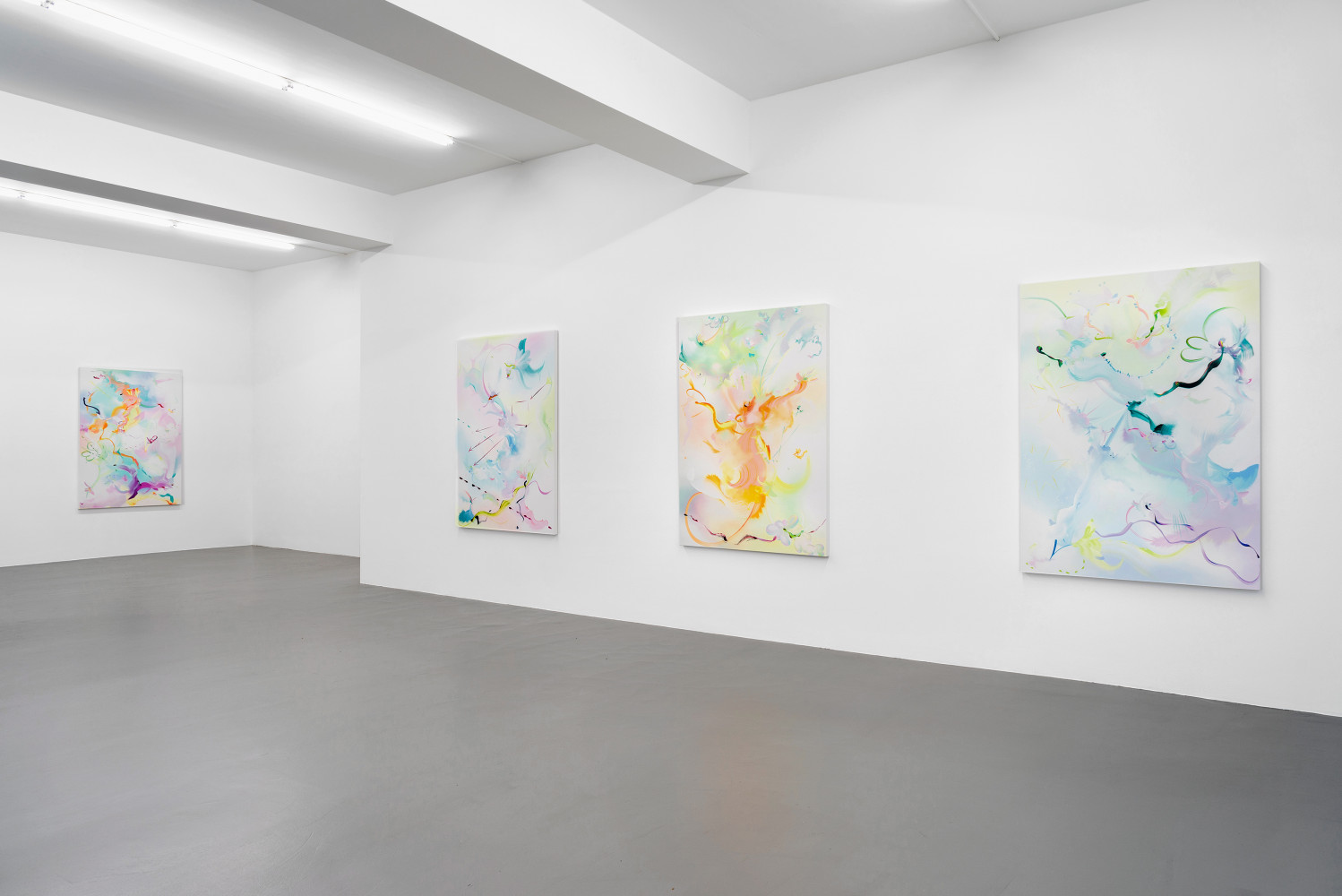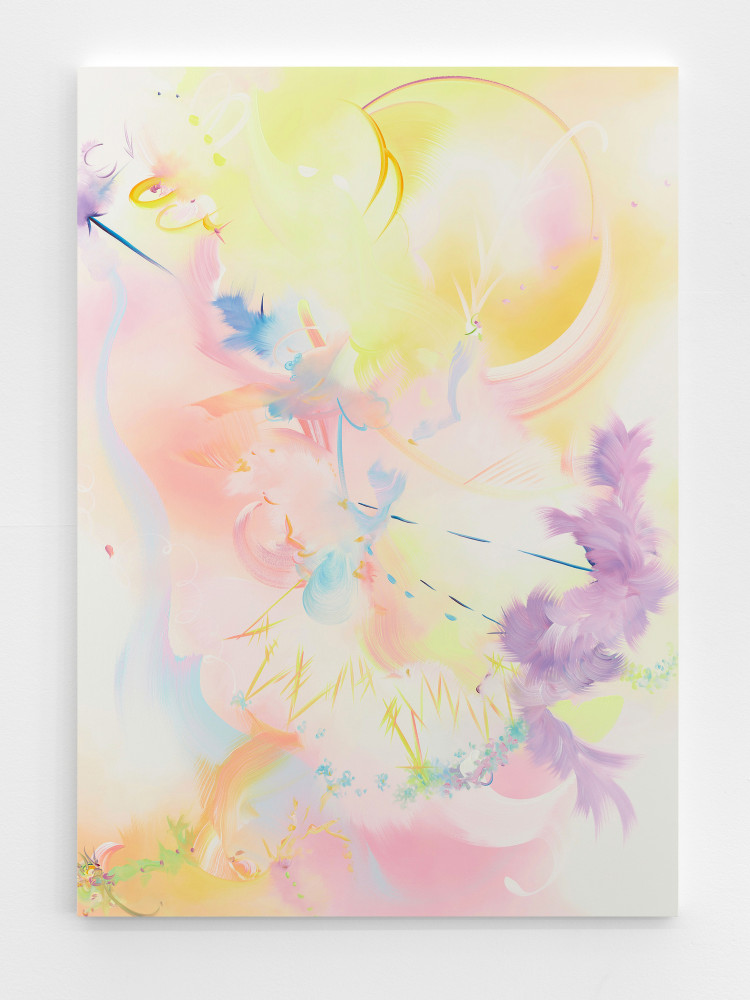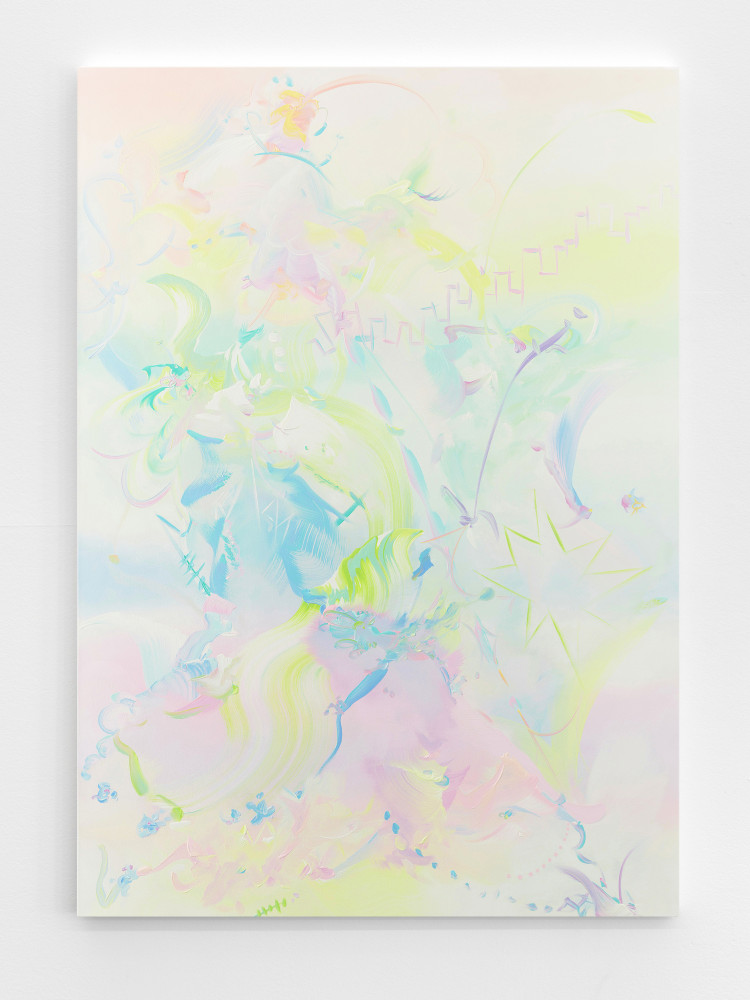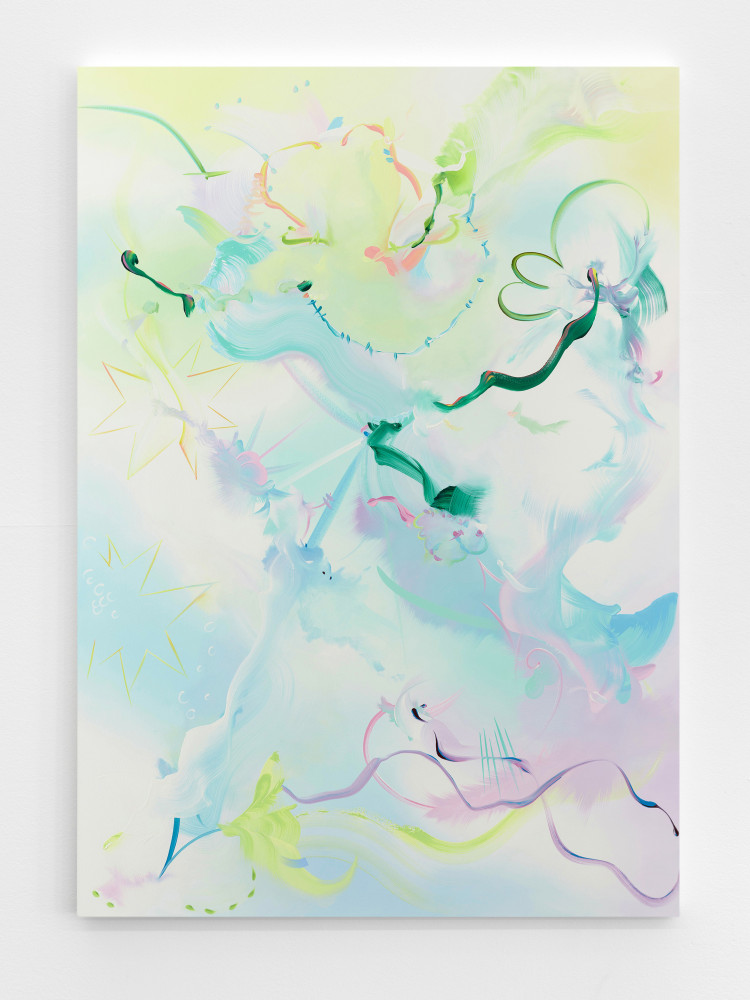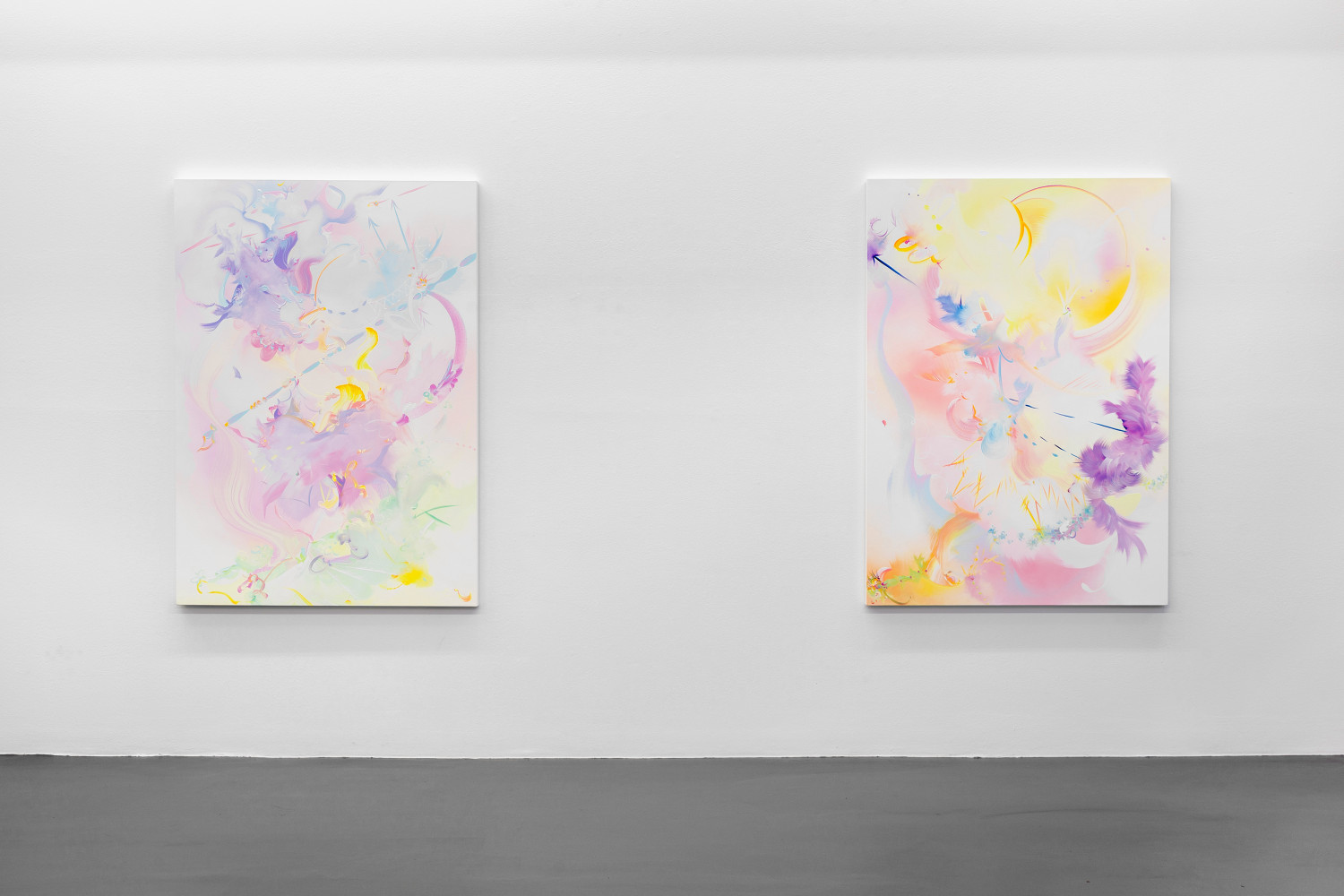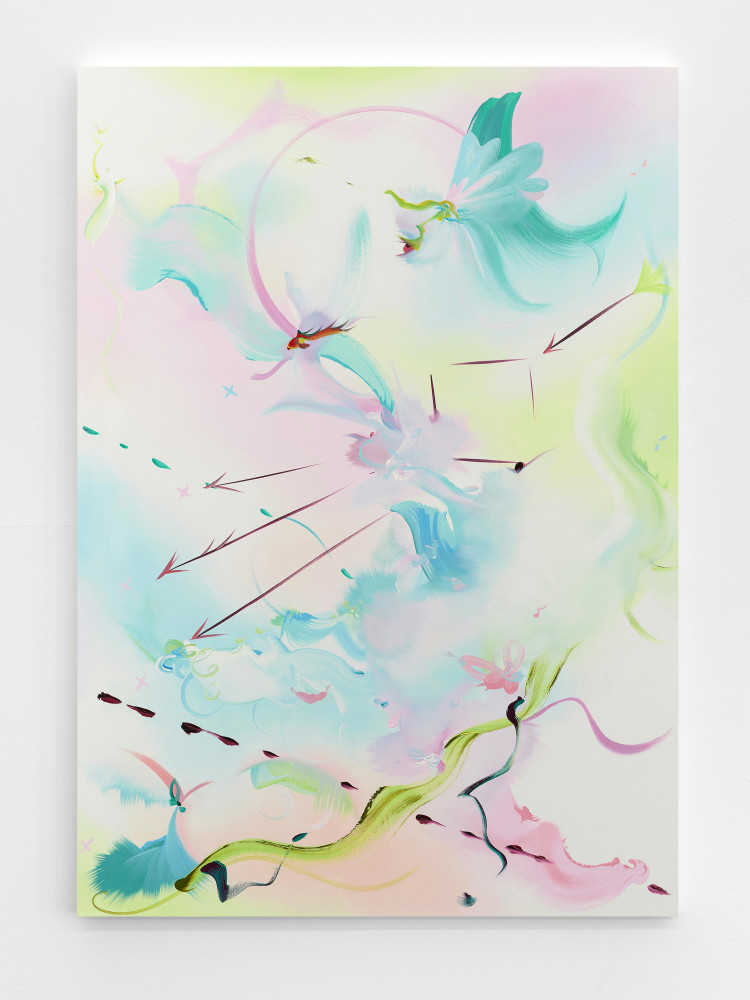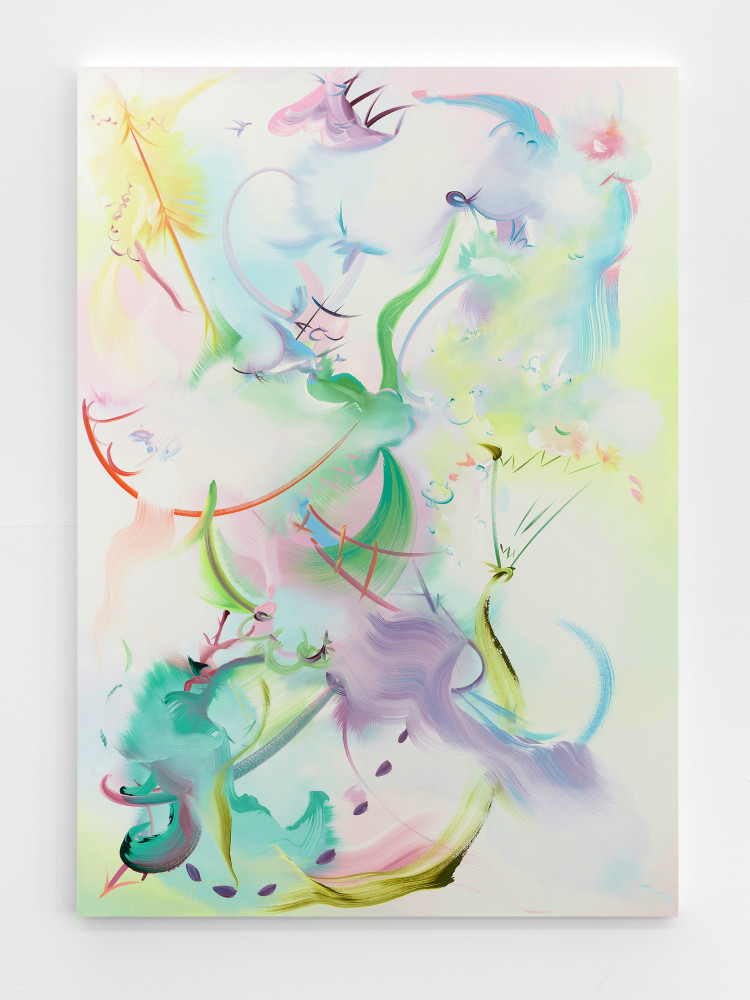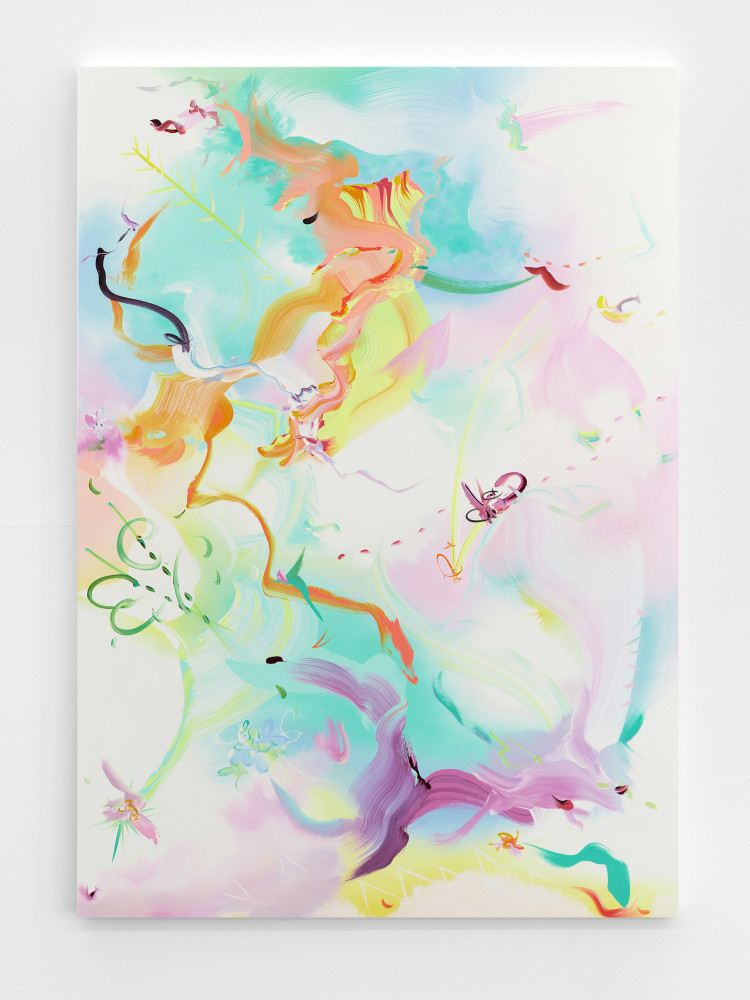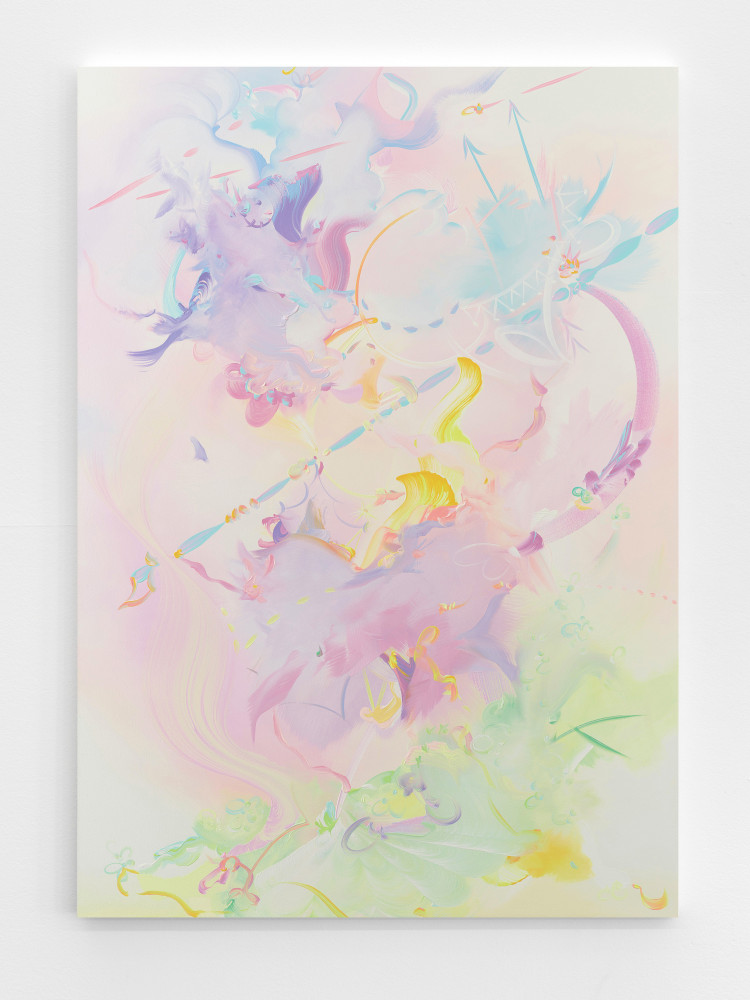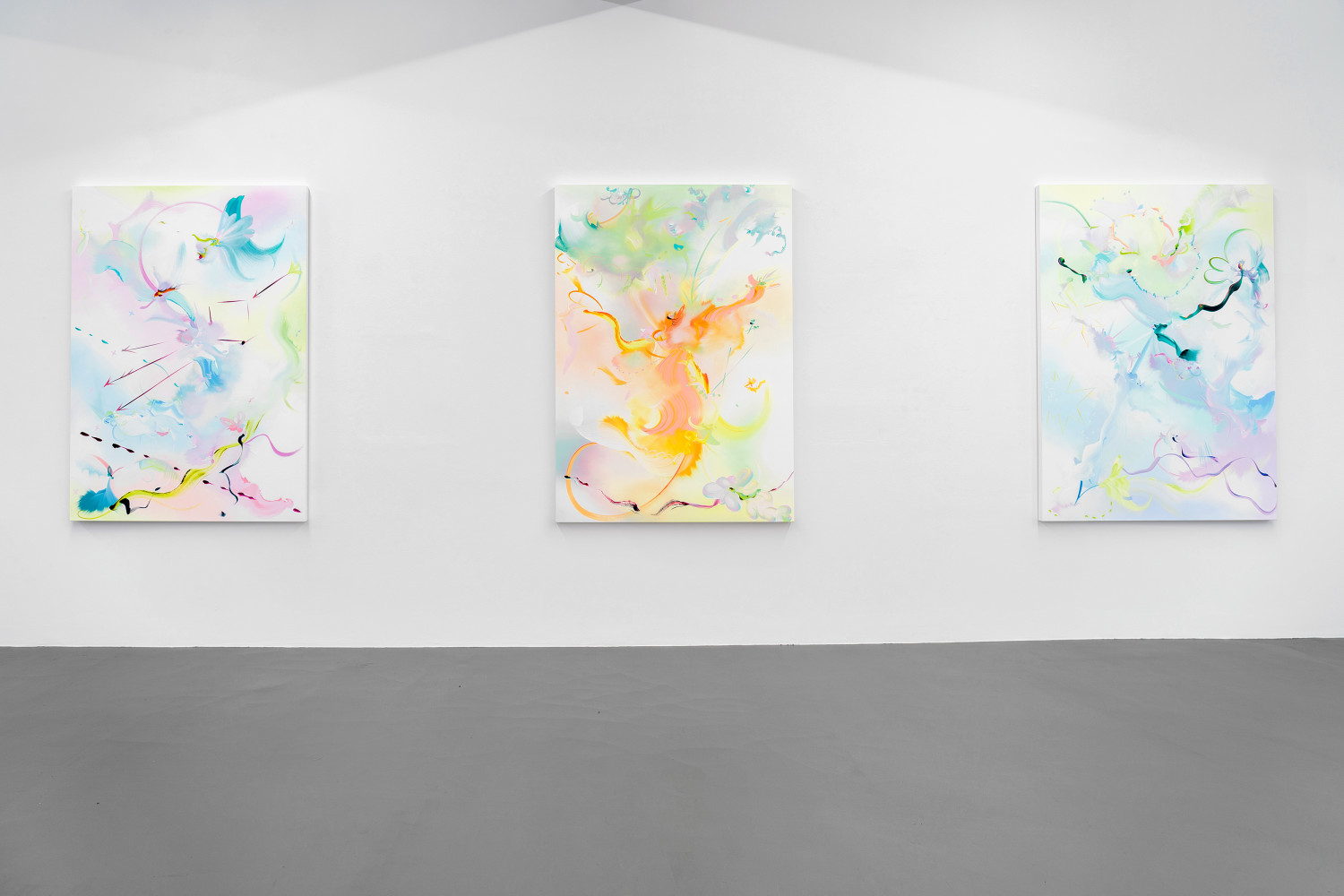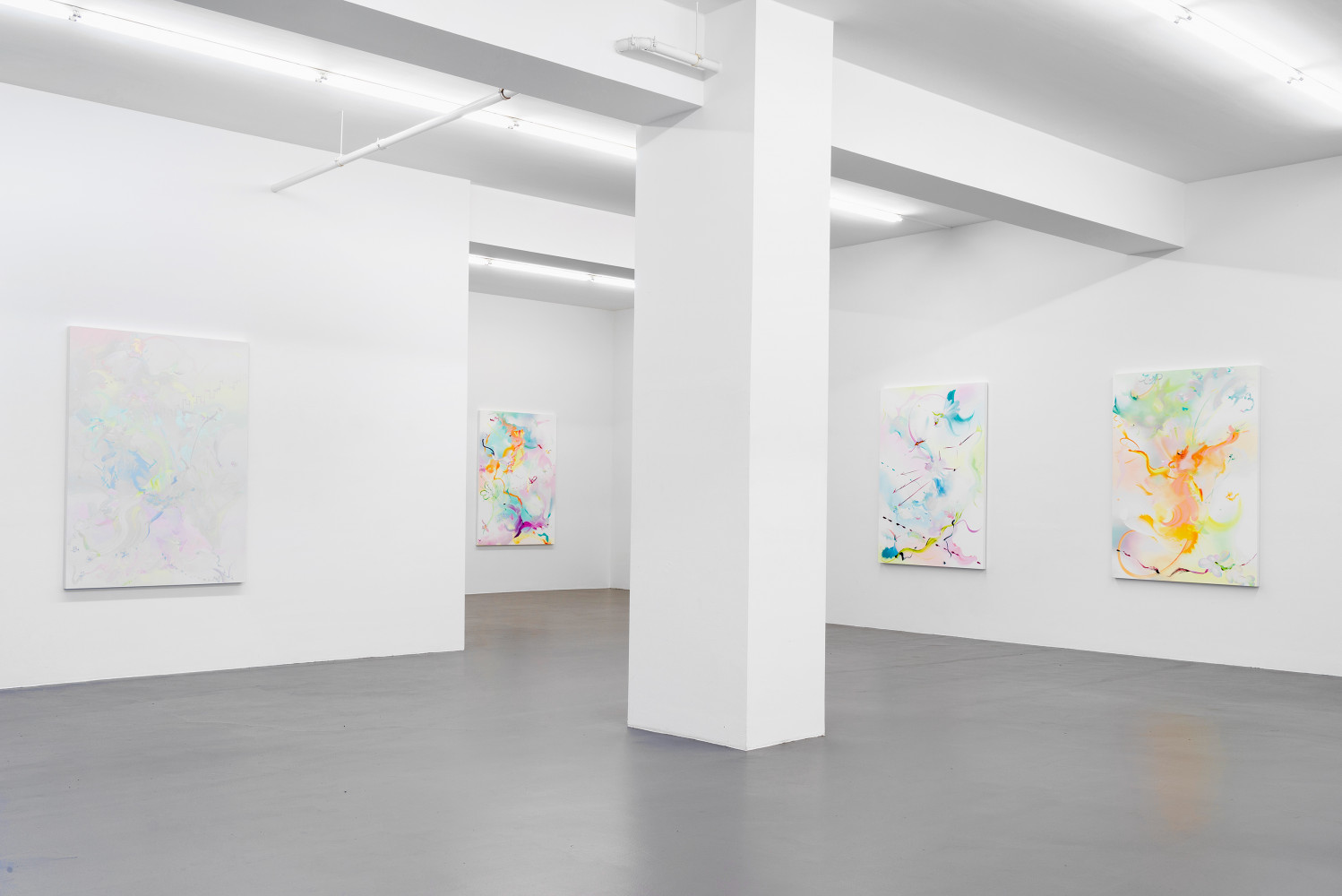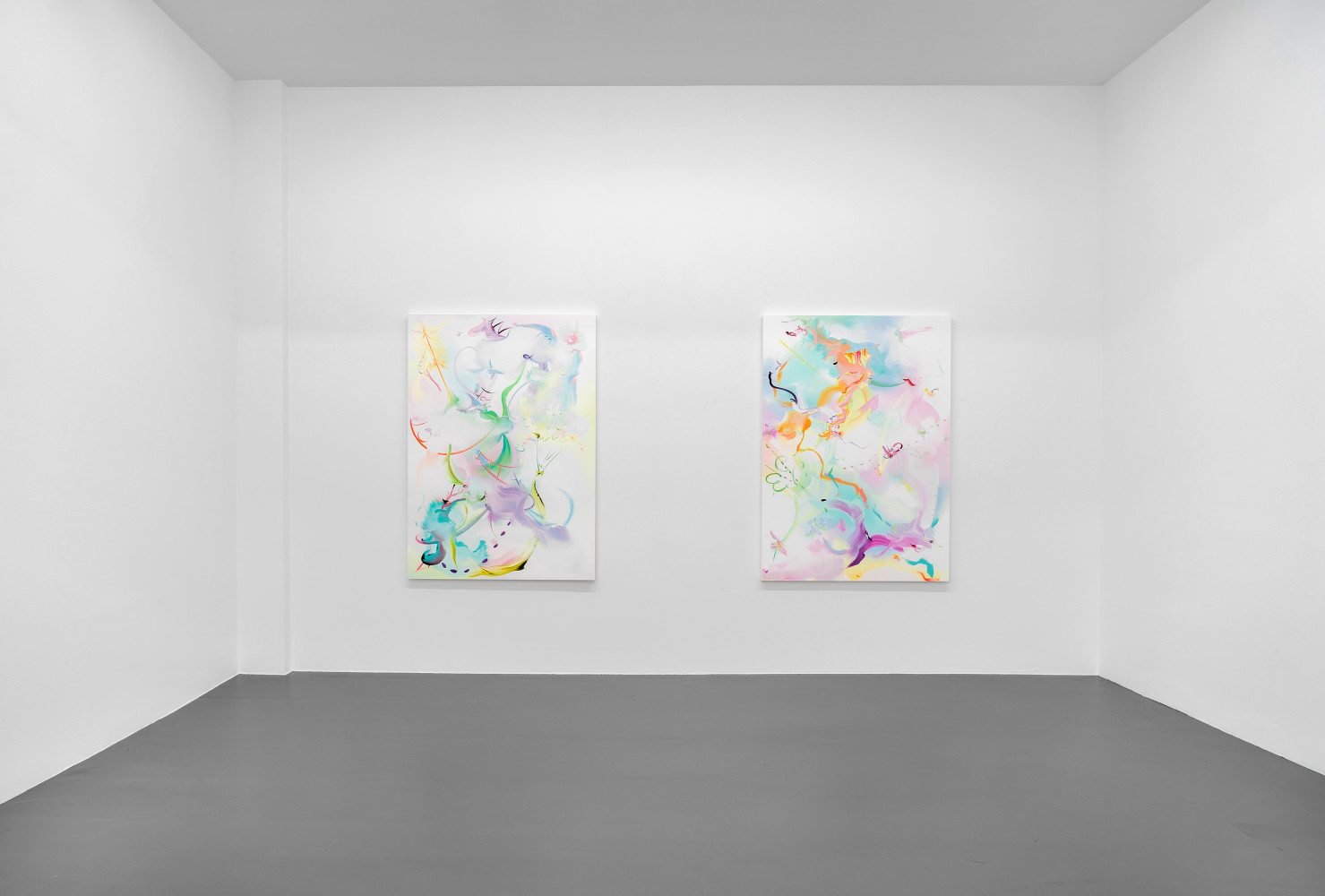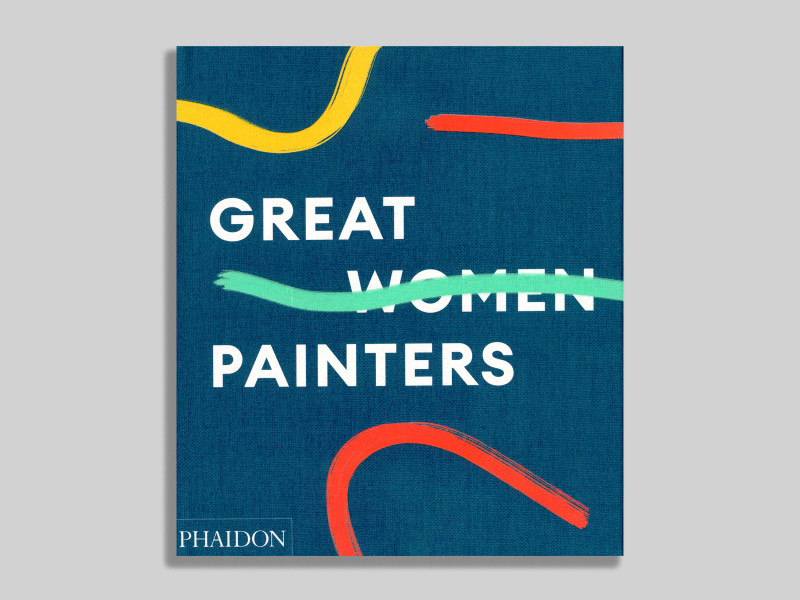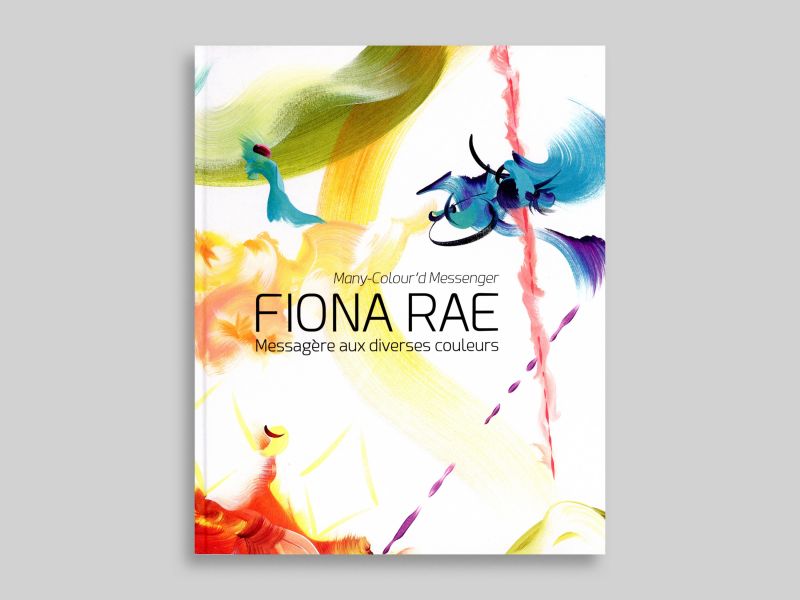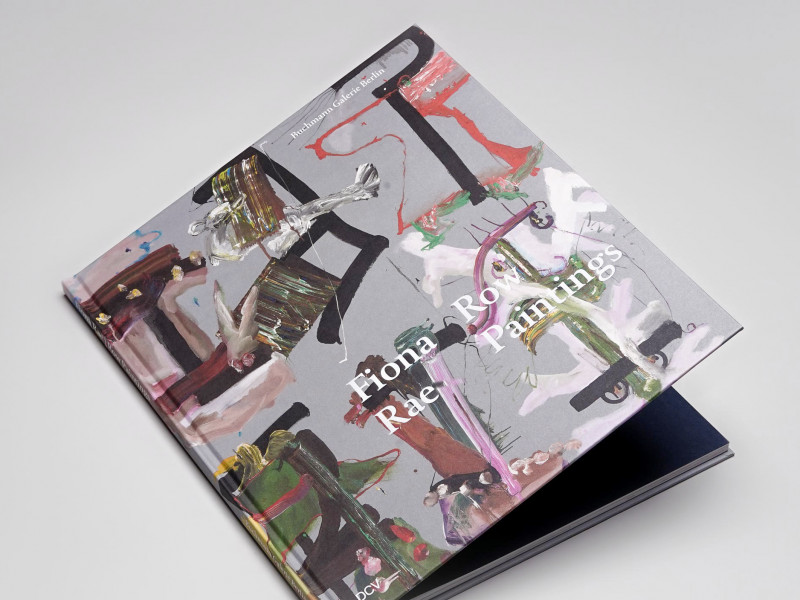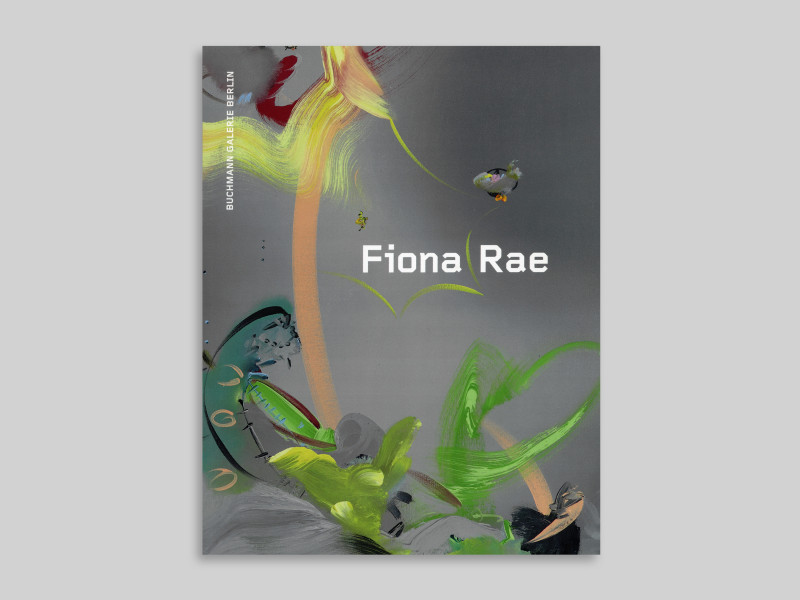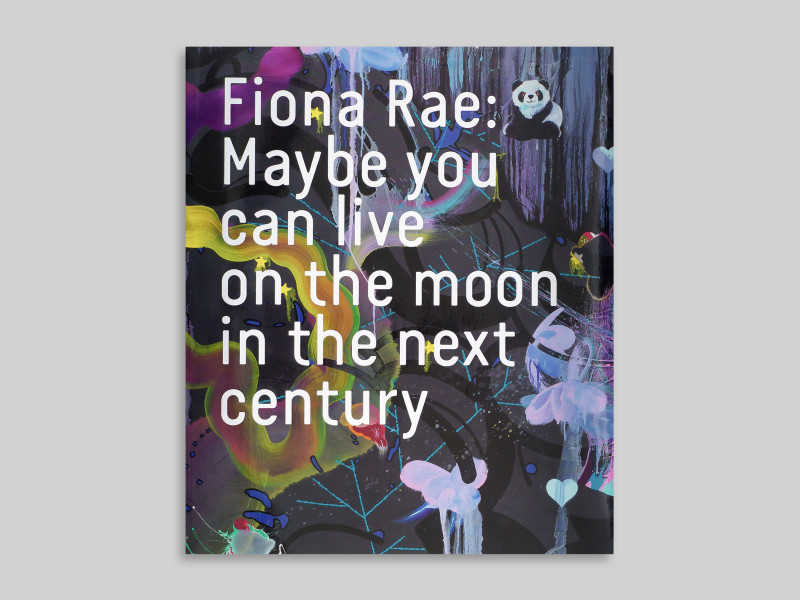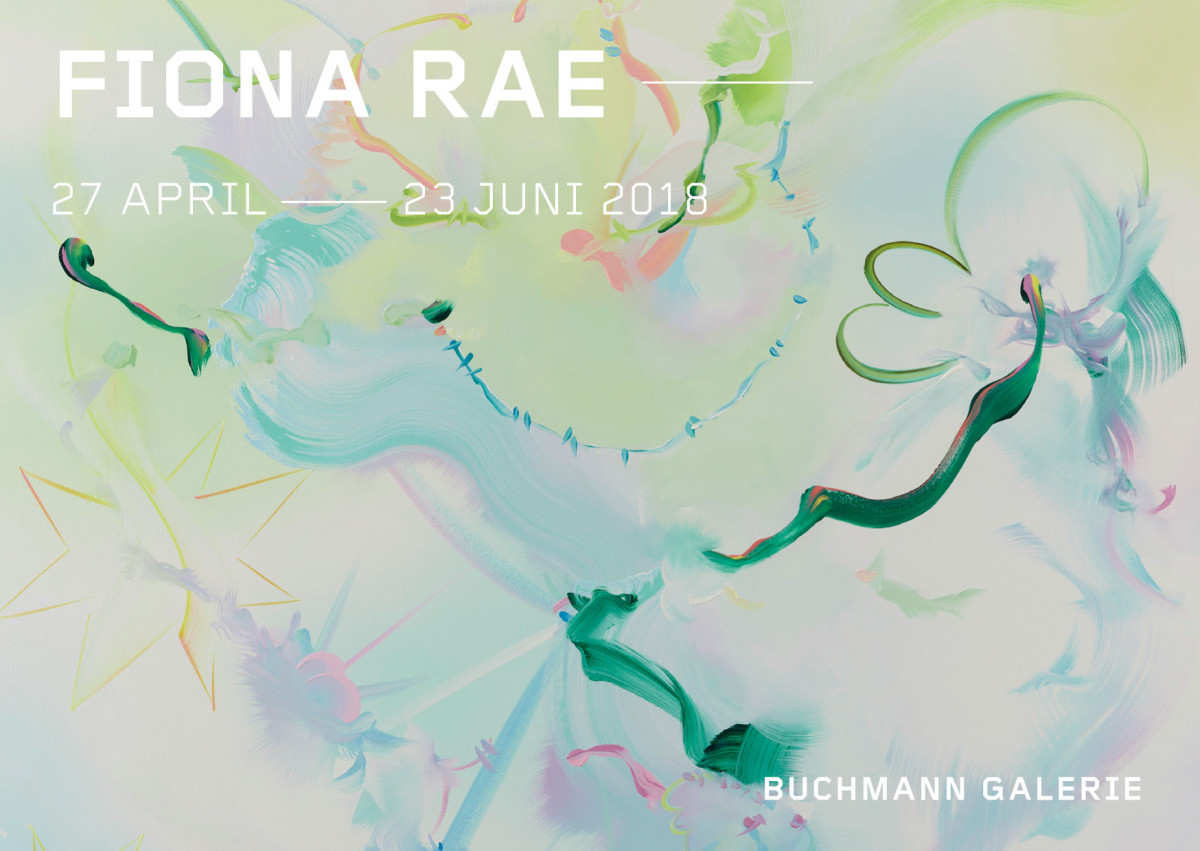
Fiona Rae
Pastel shades dominate the new paintings by British artist Fiona Rae (*1963 in Hong Kong, lives and works in London). Fiona Rae sounds out the possibilities of the genre in her painting, understanding abstraction as a language to be continually re-modified.
After restricting herself exclusively to the colour range white to black in a previous group of works, here the conceptual starting point is almost the reverse, inasmuch as black is eliminated altogether and used neither as an independent colour nor for mixing with other shades. Instead, the focus is on delicate, fluidly merging pastel shades, with which Fiona Rae creates a cloudy picture ground, in which it is not entirely clear where one colour begins and another ends. The artist combines this pictorial space with graphic, sometimes merely suggested, expressive painterly gestures, which may be interpreted as either figurative or abstract.
The pictorial space exudes a fathomless, floating sensuality, a bacchanal element that provides the basis for numerous graphic settings such as arrows or apparently stylized brushstrokes. As kind of super-signs, these act like characters performing the drama of painting on the canvas.
Unsurprisingly, the titles also point towards this new theatricality in the work of Fiona Rae: they refer to archetypical fairy-tale characters and originate from plays by William Shakespeare: The Tempestand A Midsummer Night's Dream. Here, too, we sense Rae's fascination with the collision between high culture and the banal. In this context, the artist remarks:
I am intrigued by the juxtaposition of high and low, of serious and comic, of familiar and esoteric, and what that might mean and suggest when found together in a painting or a title.
There has always been an encyclopaedic dimension to Fiona Rae's work as well, as Nicolas Bourriaud indicated in “The Atlas of Fiona Rae”.
In the artist's current works the encyclopaedic attains a new quality: the painterly gestures reveal the genre of painting as a field dominated by diversely layered information, which is assessed in ever new ways via theatrical handling of this same information and codes.
Fiona Rae's works are represented in numerous public collections, including the Tate Collection UK, Centre Pompidou Paris, Hamburger Bahnhof Berlin and the Mudam Luxembourg.

Fiona Rae
Born 1963 in Hong Kong. Lives and works in London.
| 1983-84 | Croydon College of Art, London, UK |
| 1984-87 | Goldsmiths College, London, UK |
| 2018 | Royal Mail Stamp Design Commission for the 250th anniversary of Royal Academy of Arts, London, UK |
| 2017 | Curator of Invited Room, The 249th Royal Academy of Arts Summer Exhibition, Royal Academy of Arts, London, UK |
| 2015 | Honorary Fellow of Goldsmiths, London, UK |
| 2011-15 | Professor of Painting for the Royal Academy Schools, London, UK |
| 2011-13 | Tate Members’ Artist Commission, London, UK |
| 2010 | Curator of Invited Room, The 242nd Royal Academy of Arts Summer Exhibition, Royal Academy of Arts, London, UK |
| 2007 | Shortlisted for the Charles Wollaston Award, The 239th Royal Academy of Arts Summer Exhibition, Royal Academy of Arts, London, UK |
| 2005-09 | Appointed Tate Artist Trustee, London, UK |
| 2005 | Master Artist in Residence at Atlantic Center for the Arts, New Smyrna Beach, Florida, USA |
| 2003 | BBC Art Site Installations Commissions, BBC Broadcasting House Public Art Program, London, UK |
| 2002-05 | Tate Modern Restaurant Commission, London, UK |
| 2002 |
Elected to Royal Academy of Arts, London, UK |
| 1993 |
Shortlisted for the Eliette von Karajan Prize for Young Painters, Austria |
| 1991 | Shortlisted for the Turner Prize, Tate Britain, London, UK |
Albertina Museum, Vienna, Austria
Albright-Knox Art Gallery, Buffalo, New York, USA
Arts Council England, UK
Astrup Fearnley Museum of Modern Art, Oslo, Norway
Birmingham Museum and Art Gallery, UK
British Council, UK
Calouste Gulbenkian Foundation, Lisbon, Portugal
Carré d’Art - Musée d’Art Contemporain, Nîmes, France
Contemporary Art Society, London, UK
Corcoran Gallery of Art, Washington, D.C., USA
Essl Museum - Kunst der Gegenwart, Klosterneuburg, Austria
Fondation Louis Vuitton, Paris, France
Fonds National d'Art Contemporain, Paris, France
Fonds Régional d'Art Contemporain d’Auvergne, Clermont-Ferrand, France
Fonds Régional d'Art Contemporain d'Île-de-France, France
Fundación Barrié, A Coruña, Spain
Fundació “la Caixa”, Barcelona, Spain
Government Art Collection, UK
Hamburger Bahnhof - Museum für Gegenwart, Berlin, Germany
The Herbert F. Johnson Museum of Art, Cornell University, Ithaca, New York, USA
Hirshhorn Museum and Sculpture Garden, The Smithsonian Institution, Washington D.C., USA
Jerwood Collection, London, UK
Leeds Museums and Galleries, Leeds, UK
Mudam Luxembourg - Musée d’Art Moderne Grand-Duc Jean, Luxembourg
Musée Départemental de Rochechouart, Haute-Vienne, France
Musée National d’Art Moderne, Centre Pompidou, Paris, France
Museum Morsbroich, Leverkusen, Germany
Pallant House Gallery, Chichester, UK
Royal Academy of Arts, London, UK
Sintra Museum of Modern Art, Portugal
Southampton City Art Gallery, Southampton, UK
Tate Collection, UK
Walker Art Gallery, Liverpool, UK
Warwick University Art Collection, UK
